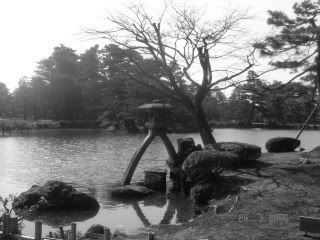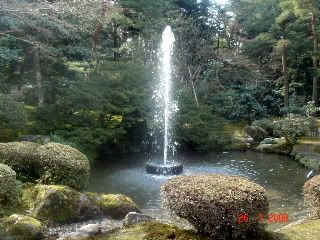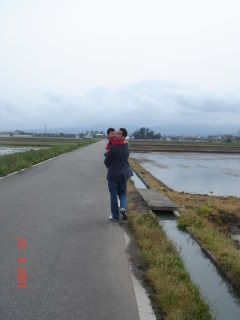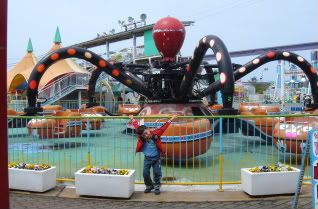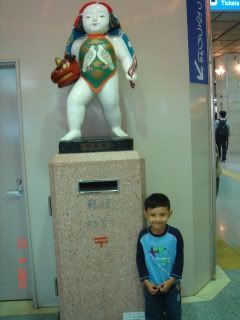 |
| Our Home, in storage at Sue and Tom's backyard in Sumner, Washington |
“If you come home as happy as you leave, you have had a good vacation”, especially if that is the second coming home! When we left Seattle for Manila Feb 24, I was coming home a Balikbayan (returning resident). I had lived in the Philippines for 54 years before migrating to the United States 8 years ago (yes, that makes me 62!). Coming back to Seattle on May 26 was another coming home, especially since I entered the country as a US citizen for the first time.
Then Merry Jo asked me what my top 10 things are about the 3-month visit to the Philippines as a tourist with a hometown advantage! Here they are:
 |
| sprawling Divisoria Market |
Shopping. The largest shopping mall in the world outside of China, the Mall of Asia (MOA), is not the only reason the country is a shopping mecca. A very large shopping district called Divisoria near Chinatown has a wide range of local and imported goods at a fourth of their prices in malls. In more accessible Greenhills, they are at a third. I was ecstatic (Bill was satisfied) after 11 hours in 3 Divisoria malls and another 6 in Greenhills.
Ecotourism. An archipelago of 7,107 islands, the Philippines offers some of the best dive spots (Tubbataha Reef, Coron, Donsol, etc.) and beaches (Boracay, Bohol, Pagudpud, etc.) in the world. And whether in the Old Seven Wonders or the New Seven Wonders lists, she is in both: The Ifugao Rice Terraces (Banaue, Hapao, Batad) and the longest Subterranean River in Palawan..
Historical Tourism. Magellan discovered the Philippines in 1521. Named after King Philip, the islands were ruled by Spain for 300 years. Intramuros (within walls) is the old Manila fortress city and Vigan in Ilocos Sur is where Spanish homes are preserved, largely untouched by war. It is interesting to note that the University of Sto. Tomas is older than Harvard University! After the Spain’s defeat in the Spanish-American War, she became an American colony for 50 years. Corregidor, Subic, and Clark are landmarks of the American rule and WWII.
 |
| dental tourism |
Health/Wellness Tourism. But the Philippines excels in a new kind of tourism. I had two crowns made at Smile Asia in MOA where 3 pretty dentists take turns at amazed clients. Each crown cost me $150 ($800 in the US)! My doctor’s visits also cost me a mere $25 per appointment, even lower than my medical insurance co-pay (with a max of 4 visits). I made about 10 visits to specialists for a small fraction of what I would have shelled out in the US. Sleek spas and varied wholesome wellness programs are also much more affordable.
Educational Tourism. There are also many universities, colleges, and special schools in the country. And since English is the medium of instruction, the schools draw a lot of Asians to their curricula. One such example is the Asian Institute of Management that ranks well among the top graduate schools in Asia. The University of the Philippines, established according to the American educational system, is also another popular school for Asians.
 |
| Emma, Didi and us at a cultural show |
Entertainment Tourism. Nightlife in the country is exceptionally vibrant. With the country having become the call center capital of the world, many offices are open 24x7. Shops, restaurants, and pubs are thus open well into the early mornings. 20M people in Metro Manila and 95 M in the country make for a very large market so international concerts (Justin Bieber Live!) and events (International Fireworks competition) are frequently held in the country. Golf courses and casinos are also best value places to go to!
Access to Asia. If these are not enough, the country’s proximity to great destinations in South East Asia also makes it a great base for budget tours. HK, Macau, Taiwan, Vietnam, Brunei, Singapore, Bangkok, Shanghai, Beijing, Seoul, and Tokyo are just around $50 in promo fares. So Bill and I plan to make our next stay 6 months to cover more of the country and the rest of Asia.
Food. Local food is a fusion of Spanish, Chinese and American cuisine. But there are so many expats in the country that almost all kinds of cuisine are easily available. Besides, seafood is abundant and cheap. Whether it is fine dining, international chains, holes in the wall, or special weekend markets, food is always good, plenty and cheap.
 |
| tricycles abound |
 |
| jeepneys take you to remote places |
Transportation and Accommodation. The country is now bustling with domestic tourism because of cheap airfare from smaller carriers. There are several international airports aside from Manila. Roll-on-roll-off systems allow buses to cover the archipelago from north to south. Metro Manila is covered by mass transit systems and bus lines. Side streets are accessible via colorful jeepneys (legacy of the American jeep from WWII) and ubiquitous tricycles. An entire range of accommodations are also available from 5-star hotels to B & Bs, hostels, and homestays.
 |
| our condo in Makati |
 |
| despedida with friends |
People. But it is the warmth and hospitality of the Filipino people that is legendary. It is not only the fact that almost anyone can speak English that makes anyone’s stay comfortable, but also they seem to have an innate desire to please. It is party mood every day and almost any excuse is enough to meet and share a meal.
In 90 days, we had 42 days of reunions, 26 days of tours, and 20 days of ‘work’. But you may say I am biased because the Philippines is my second home. Perhaps later Bill will also consider it his.
 |
| despedida with family |
 |
| despedida with family and friends |
 |
| despedida with family |
Next Stop: Glacier National Park, Montana

























